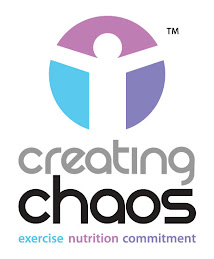Are you motivating your clients?
Phill Wright, Director, Creating Chaos
As personal trainers, the very top of our job descriptions reads 'motivational'...but the question is, are you actually motivational. To be able to accurately answer this question, you'd need to be able to answer a couple of questions:
As personal trainers, the very top of our job descriptions reads 'motivational'...but the question is, are you actually motivational. To be able to accurately answer this question, you'd need to be able to answer a couple of questions:
- How are your clients motivated?
- How do you motivate clients?
- How do you tailor your style to fit each of your clients?
Knowing how your clients are motivated is absolutely paramount. It's very difficult to motivate someone without knowing the true things that actually drive them. Some people are motivated by achievement and reaching goals, others are driven by having recognition and approval from others. Read more on these. The reality is that we all show different elements of each in different environments. Understanding how your clients are driven in terms of health and fitness could make your life a million times easier when keeping them going.
As trainers, we have dozens of tools in our toolbox to draw upon. Which ones do you draw upon to assist your clients? Here's just a few ways in which you can offer continued purpose and drive to your client's journeys:
- Applause - regular recognition and encouragement for their efforts
- Training - not just the work load of exercise in their programme but also the process of learning. Be it about exercise, nutrition or lifestyle choices. After all, in an ideal world, your clients wouldn't need you would they?
- Milestones - marking significant points in their journey with rewards (these don't need to cost)
- Enjoyable environment - making sure sessions are enjoyable. If sessions are just hard work and not enjoyable, your client will attach un-enjoyment and possibly even suffering to their perception of exercise. Not a great idea and unlikely to increase the likelihood of clients exercising without you there
- Themed sessions - To mark achievement, allow your client to decide on the content of a session (within reason) based on what they most enjoy
- Social gatherings - ideal for group fitness environments. Getting clients together can forge new friendships and help boost confidence levels
- Train the trainer day - Let your client train you. (Only if you're confident being having the roles reversed) This can be a really powerful tool. Not only will it let them get their own back, it will build huge rapport, show them that exercise can be just as hard for others as it is for them, build confidence, highlight how much they've learnt...the list goes on!!
So, going back to the original questions, how do you motivate clients and how do you tailor your style? Spending time in the initial consultation working out how clients are driven and how you can support this will make monumental differences to how positive, focussed, enthusiastic and determined your clients are. Even if this doesn't come straight away, spending time as your relationship with clients continues adding to your understanding of their motivational hot buttons, you can only step closer and closer to keeping them happy, loyal and adding to the successful projects of your port folio.







